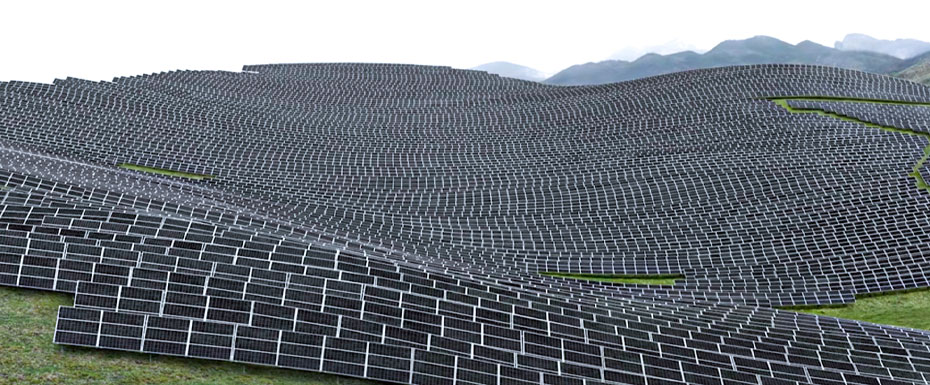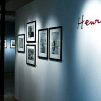
Andreas Gursky is the highest-paid photographer ever, and the contemporary art museums the world over are standing in line to obtain his works. The photos of Gursky have an extraterrestrial look as if he can see what is beyond a regular human eye. With the help of the camera, he depicts society as a unified, organized structure that functions in an ideal rhythm. The quality of his works is often compared to fine paintings; therefore, some critics call them canvases.
Early Years
Gursky was born in East Germany in 1955, and his family soon moved to Dusseldorf in the West. Andreas’ parents owned a photo studio, and his father made a successful career as an advertising photographer and became his son’s first teacher. Before graduating from high school, Andreas learned the technical skills and secrets of his father’s photography.
Gursky studied at the University of Essen, which is considered the birthplace of avant-garde art. His teacher was the famous German photographer Otto Steinert, who became famous for his psychological portraits and created a new style of subjective photography that influenced many photographers in Europe and America.

Graduating from a prestigious university and studying with a famous teacher did not help Gursky land a job in the profession. While working as a taxi driver, Andreas met the renowned contemporary photographer Thomas Strut, who helped him enter the Academy of Arts.
Patrons
Andreas Gursky entered the Düsseldorf Academy, the home of the greatest photographers and artists in Europe. There he became a protege of the famous German masters of conceptualism Bernd and Hilla Becher, who became famous for shooting industrial objects.
The first personal exhibition of Andreas was held at the Berlin gallery Galerie Johnen & Schöttle. A year later, his work was exhibited at the Museum Haus Lange in the German city of Krefeld. During this period, Gursky’s commercial success began to grow, thanks to the skyrocketing international interest in photography and Becher’s fame reaching its peak.
Fame

In 1990, Gursky went on a trip around Asia, Europe and America. There he photographed houses, factories, hotels, and office buildings. The photographer planned the trip in as much detail as possible: even before arriving in the city, he knew which buildings and from what angle he would photograph. By printing his photographs, Gursky began using the largest photo paper size on the market at the time. In the following decade, Andreas Gursky opened solo exhibitions of all his works in museums of Amsterdam and Dusseldorf.
At the turn of the century, he began to process the images on a computer in order to achieve better detail, change the palette, add new elements and eliminate unnecessary ones. In 2001, Andreas Gursky snapped a photograph of Rein, which was subsequently auctioned for a record $ 4.3 million. After that, Gursky became the most expensive photographer in the world. Andreas used digital retouching to achieve a “desolate” landscape. In the original version, a power plant was in the photo’s background, and a man with a dog was in the foreground. In recent years, Gursky has primarily photographed architecture, landscapes, and crowds in various circumstances.
The Rules of Photography According to Gursky:
- Take pictures from the highestvantage point
To take a picture, the photographer rents helicopters, tall cranes, climbs hills and skyscrapers, trying to take a shot from such an angle that would render it inimitable. In 2010, Gursky used high-resolution satellite imagery for his Ocean series. The series caused a lot of controversy over whether such photographs should be considered a work of art.
- Documenta person’s life
When photographing, you need to awake the scientist in yourself, who, through photographs, records the vital activity of a person. “I photograph with a mindset of a researcher who observes the world at a distance, studies it, and tries to understand its construction, the logic of its development.”
- Use high-quality images
Gursky’s photographs are full of the smallest details – they saturate the picture with life. For example, if you look at a full-size photograph of a house, you can look into every window, admire the flowers on the windowsills, explore the variety of table lamps, and count at least 4 easels standing near the windows.
This photo is also interesting in that Gursky separately photographed the sides of the building and “attached” them to the facade, allowing the viewer to see the house from three perspectives at once.
- Use multiple framesforone photo
Stitching multiple frames into one allows you to print a huge canvas-sized photo. The number of shots can vary from 2, and up to several dozen.
- Edit colors
Gursky pays great attention to color. However, he does not allow many shades of the same color to stay on a single shot. As a result, the palette in his works is rather limited.





